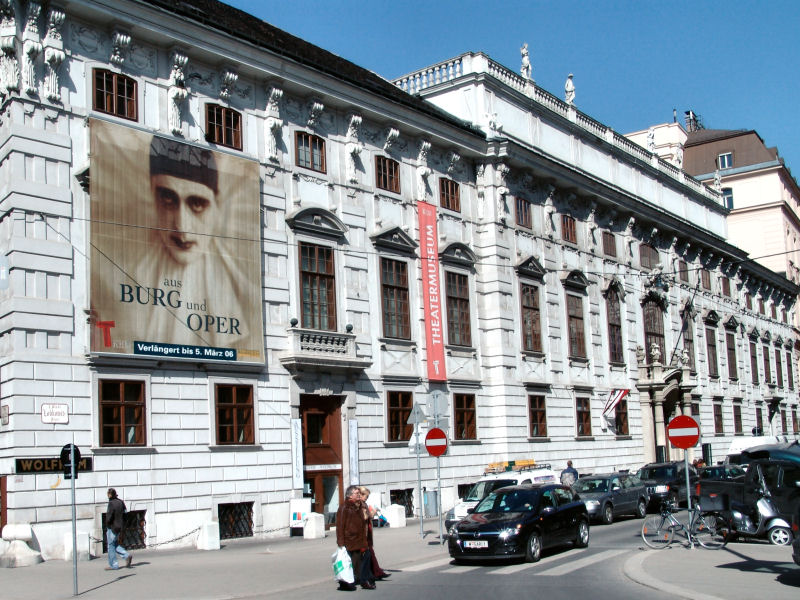Theatermuseum

Lobkowitzplatz 2, 1010 Vienna
Lobkowitz Palace (690.506)
General and Historical Facts
The Lobkowitz Palace building, which is situated in a square then used as pig market, was the first profane palace built in Vienna after the second Ottoman siege in 1683. Philipp Sigmund, Count of Dietrichstein, commissioned Giovanni Pietro Tencala with the design of Lobkowitz Palace in 1687. It was built between 1690 and 1694, in cooperation with Johann Bernhard Fischer von Erlach. The Lobkowitz counts acquired the building much later, in 1745. Count Ferdinand Philipp of Lobkowitz maintained good contacts with Christoph Willibald Gluck and Philipp Emanuel Bach. His son, Franz Joseph Maximilian, Count off Lobkowitz, was an important patron of Viennese and Bohemian music and arts of his time and even became the director of the court theatre at some point in his life. In 1799, he had the festive hall adapted into a concert hall, where he kept his own orchestra. Since Ludwig van Beethoven, who dedicated many of his pieces to the count, premiered his Third Symphony – which had originally been given the title "Bonaparte" – in this hall, the latter was named "Eroica Hall" for that reason.
Around the middle of the 19th century, the Lobkowitz family rented out the Palace. From 1869 till 1909 the French Embassy and from 1919 till 1938 the Czechoslovakian mission were based in the building. In 1939, the Palace was converted into the "House of Fashion", a central information and propaganda office in fashion affairs. After the Second World War, the damaged building was rented by the French occupying power in 1946, renovated, refurbished and as of 1947 it housed the French Cultural Institute until 1979. Throughout all these years, the building never ceased to be owned by the Lobkowitz family. Eventually, the Palace was bought by the Republic of Austria, and after further renovations the theatrical collection was spun off the association of the Austrian National Library.
The Austrian Theatermuseum was inaugurated on October 26th, 1991 as an independent institution. The building fabric and the rooms of the Baroque floor plan had hardly been altered. The building’s structural design allows for a wide scope of flexibility in terms of exhibitions. The theatre museum conserves old theatre costumes. Furthermore, stage settings, drafts, blueprints, images and props are on display. Also, it hosts events such as children’s theatre programmes, music events and exhibitions. Its collections comprise more than 1.7 million objects – parts of them dating back to the 15th century. The library contains more than 80,000 books and is freely accessible.
Occupant:
Theatermuseum
Buchhandlung Wolfrum
Burghauptmannschaft Österreich – Departments in charge:
Building Management: Dep. 401 – Belvedere
Property Management: Dep. 201 – Administration